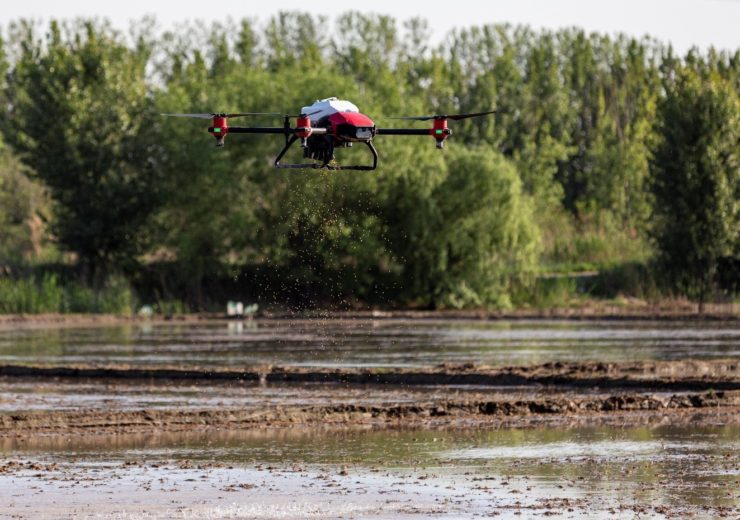XAG has said that its drones are now being deployed across several of China’s rice-producing regions, improving efficiency and are emerging as an alternative to the labour shortage in agriculture

XAG drone conducting direct rice seeding on a paddy field. (Credit: XAG.)
XAG, a China-based manufacturer of agricultural drones, has launched a new drone for rice seeding, to mitigate the shortage of labour in agriculture.
XAG is also scaling up applications in China to enable drones for night-time seeding during peak periods.
In April this year, the company demonstrated its rice seeding drone at China’s Happy Farms, a modern agricultural park in the country, where two workers were first invited to spread 5kg of rice seeds manually through a waterlogged paddy field with their feet in the mud. The process took them 25 minutes to cover 1,200m² of land.
It was followed by the drone of XAG, which took a pre-programmed route and spread the rice seeds. The drone is claimed to have completed the task within two minutes. It is further claimed that in an hour, the drone can spread the seeds in an area of 50,000m², which would otherwise take 50-60 workers to complete.
Happy Farms is touted to have introduced XAG’s drones to replace manual labour for seeding, fertilisation and crop spraying.
The drone uses an intelligent granule spread system mounted on the bottom of the drone. After the parameter is set-up on the app, the drone generates high-speed airflow which directs a pre-programmed amount of seeds accurately into the targeted topsoil.
This mechanism maintains optimum spacing and uniform plant density. Compared to manual and traditional sowing machine, the drone seeding is claimed to achieve a higher seeding rate and lodging resistance as important factors for a significantly high yield.
XAG targets its drones for areas where large-scale economies in agriculture cannot be applied
Unlike large-scale agriculture economies, most Asian countries that produce rice cannot resort to large automated machinery such as driverless tractors because of the complex terrains, the small size of the farms and high costs, said XAG.
The drones can not only be used for sowing rice seeds but can also ward off pests and diseases with ease.
XAG said that its drone seeding technology started from an experimental stage and is now being commercially adopted across China’s main rice planting regions.
Since last April, XAG’s drone seeding solutions were applied in more than 650 million m² of rice fields across the country’s 11 provinces. The drones are supporting both small and larger farm owners to resolve common challenges of operational inefficiency, ageing crisis and shortage of field workers.
